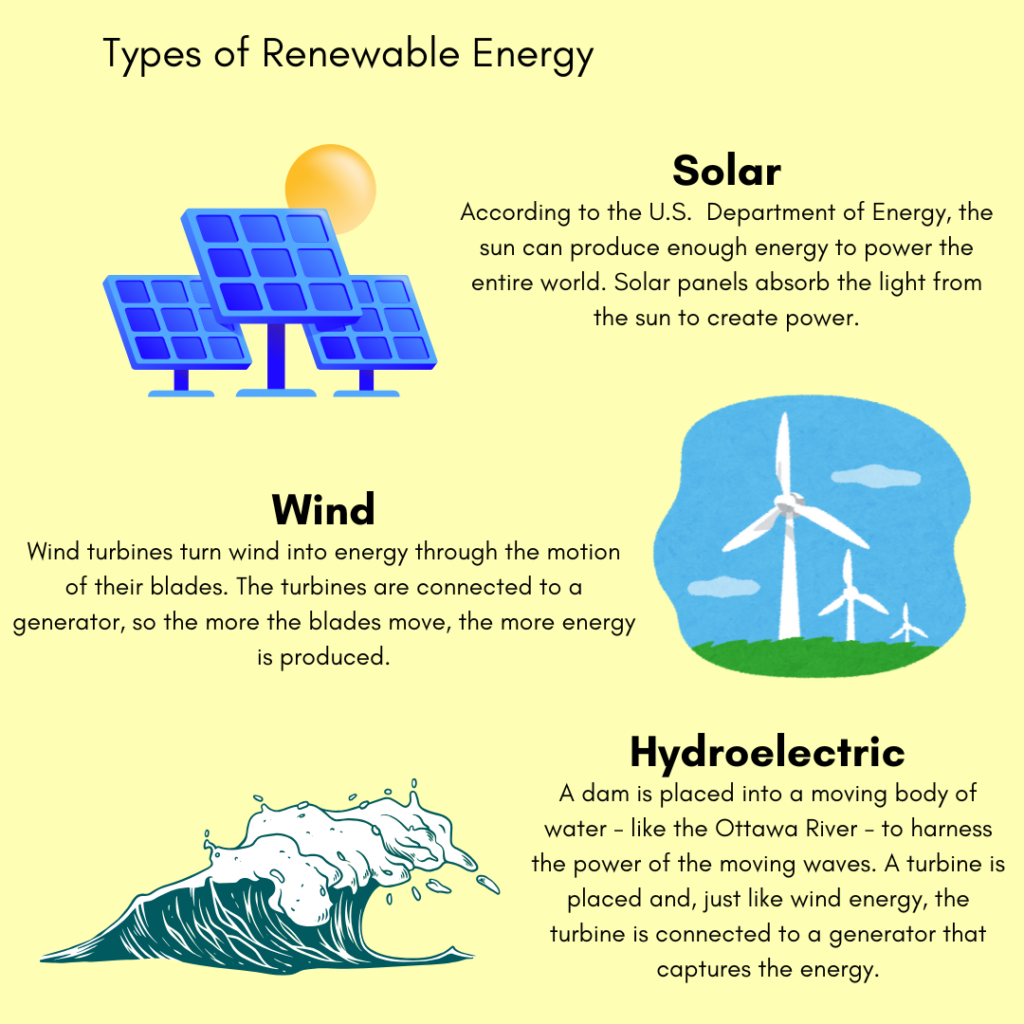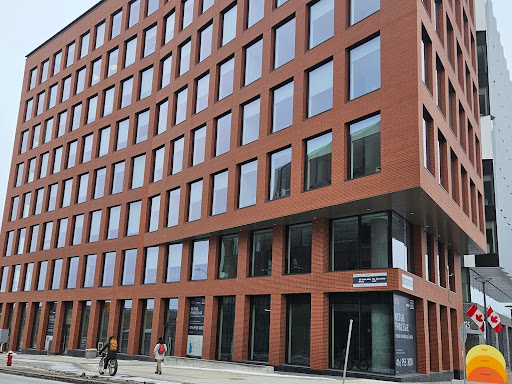Almost 50 per cent of Ottawa’s carbon emissions come from buildings. Now, the city is working towards lowering that number to zero
Imagine a city fully run by renewable energy sources. Solar panels line the roofs of homes and businesses, harnessing the sun’s energy to power the buildings. Wind turbines can be seen off in the distance, slowing generating electricity from the breeze. The air will be cleaner as fewer pollutants are put into the atmosphere.
This is the future Ottawa aspires for as it works towards its goal of zero carbon emissions by 2050, compared to carbon levels in 2012.
In 2020, Ottawa launched their Climate Change Master Plan, with their first milestone being to reduce community carbon emissions by 43 per cent and government carbon emissions by 30 per cent by 2025. To reach this goal, the city invested in an Energy Evolution plan, where non-renewable energy sources such as coal and gas will be replaced by clean energy sources.
Onita Basu, an environmental engineering professor at Carleton University, described the clean energy movement as a “move to reduce fossil fuel-based energy sources in Canada for the consumer with a push to utilize electricity to meet clean energy goals.”
Clean energy comes from renewable sources – the three most common being solar, wind and hydroelectric – which comes from large bodies of water.

A priority of the Energy Evolution plan is Better Buildings Ottawa, where big buildings are retrofitted to use clean energy sources.
Buildings are the biggest source of carbon emissions in Ottawa, according to Better Buildings Ottawa. Big changes are made to the current energy system in a building, replacing them with newer systems that are more sustainable, reducing energy usage by over 50 per cent.
“Each building is unique so we work with property managers, owners and operators to educate, provide calculation tools and guide them in the variety of retrofit options, such as upgrading mechanical systems to efficient, low-carbon operational equipment and improving temperature control through increasing insulation and reducing air leakage,” said Tyler Pelow, a project manager at Better Buildings Ottawa.
While Ottawa is struggling to meet their carbon emission deadlines due to underfunding and not enough employees, a future where everyone lives and works in a carbon neutral building isn’t far off.
Zibi is a newly developed neighbourhood along the Ottawa River that has become the National Capital Region’s first One Planet Living community.
One Planet Living is a framework put together by Bioregional, a charity that teaches businesses how to be more sustainable. The framework consists of ten principles to follow to achieve social, economic and environmental sustainability.
Zibi began development in 2018 and by the end of 2024 five residential buildings and three commercial buildings had been built.

Zibi, in collaboration with Hydro Ottawa, operates a net-zero carbon heating and cooling system, which they call the Zibi Community Utility District Energy System (ZCU). The system repurposes post-industrial waste from nearby factories to provide heating, while water from the Ottawa River is utilized for cooling.

As Zibi is slowly working towards its goal of reducing their carbon emissions by 100 per cent by serving all their current buildings through the ZCU, the city of Ottawa is slowly making progress towards its own goals.
The Energy Evolution plan hoped to have completed their 20 projects by 2025, which did not happen. However, the projects that did begin were focused on bringing carbon emissions down in buildings.
Basu believes the city needs to stop obsessing over deadlines and prioritize what really matters: finding ways to slow climate change.
“The city would be better to consider a more holistic lens on environmentalism and consider more strongly factors that improve the city overall from a nature and environmental perspective,” said Basu. “For instance, increased green areas would facilitate cooling the city and help manage with rainfall and snow management.”
For now, the Energy Evolution plan and other projects from the Climate Change Master Plan – including tree planting – are still in progress. These next five years will hopefully see the conclusion of the ongoing projects as the city slowly makes its way towards a renewable future.
